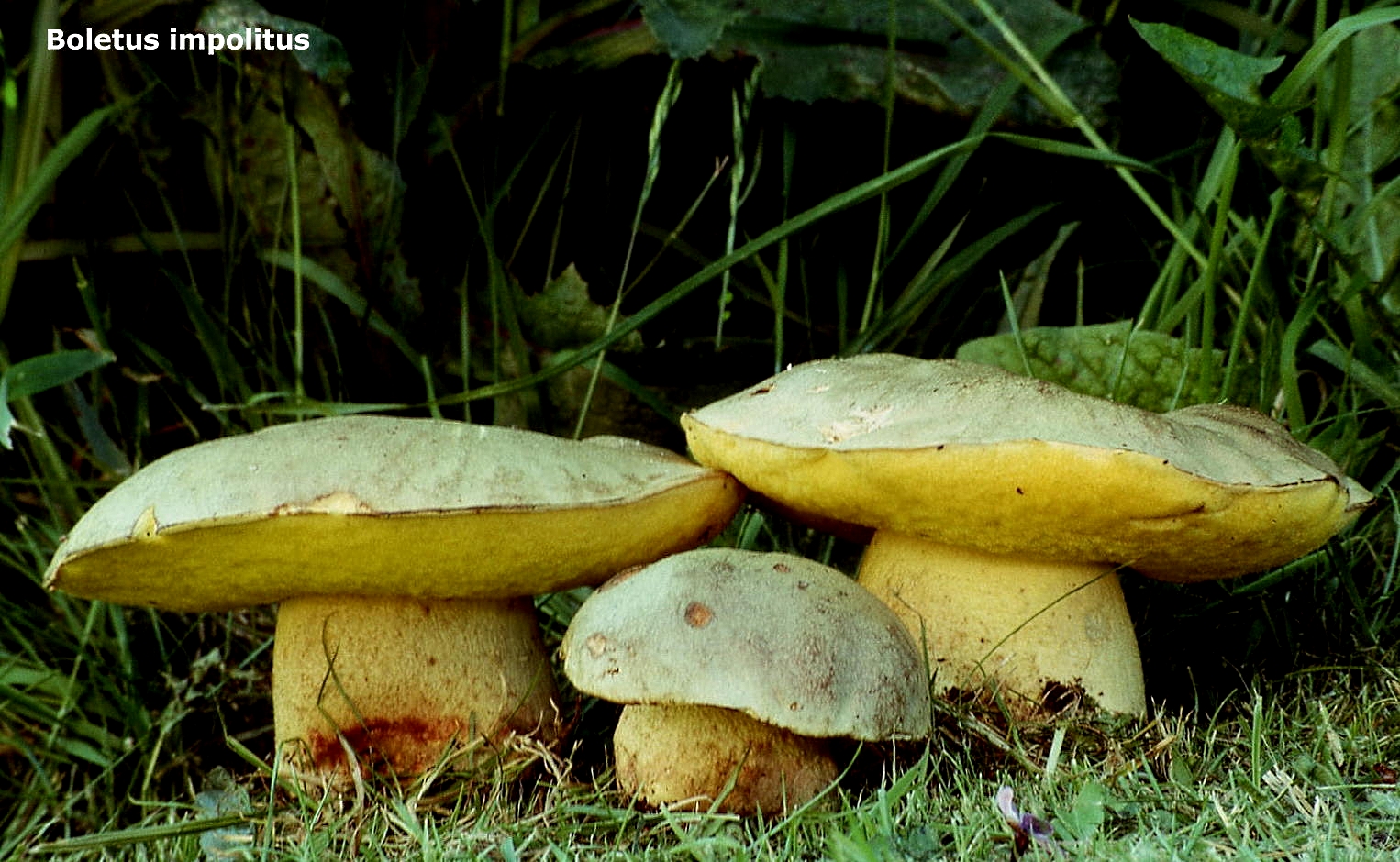- Boletus impolitus
Taxobox
name = Boletus impolitus

image_width = 250px
regnum =Fungi
divisio =Basidiomycota
classis =Agaricomycetes
ordo =Boletales
familia =Boletaceae
genus = "Boletus "
species = "B. impolitus"
binomial = "Boletus impolitus"
binomial_authority = "Fr."mycomorphbox
name = Boletus impolitus
capShape = convex
capShape2=flat
hymeniumType=pores
stipeCharacter=bare
ecologicalType=mycorrhizal
sporePrintColor=olive-brown
howEdible=edible"Boletus impolitus", is a basidiomycete fungus of the
Boletaceae family, that has tubes and pores instead of gills. These pores can be seen under the cap as tiny holes. It is edible, but rare, and should not be picked for the table. It grows beneathQuercus (oak) trees. It is sometimes called the Iodine Bolete, because of its smell when cut.Taxonomy
"Impolitus" is
Latin , meaning 'matt', 'unsmoothed', or 'unfinished', and may be a reference to the 'hammered' look of some specimens. It was first described byElias Magnus Fries , an eminent mycologist of the 19th century.Description
The cap is at first hemispherical, but flattens with age, and is sometimes upturned when mature. It is pale brown,light tan, or tawny, often with a pale grey hoariness initially.cite book | author = Roger Phillips | year = 2006 | title = Mushrooms | publisher = Pan MacMillan | isbn = 0-330-44237-6] It often has a 'hammered' look. The cap diameter usually ranges between 5 and 12 cm (2-5 in), but can reach up to 20 cm (8 in). The stem is 5 to 15 cm (2-6 in) high, and is slightly fatter at the base. It is pale yellow, and often has a red flush. It has no network (reticulation), but sometimes has reddish dots.cite book | author = Helmut and Renate Grunert | year = 1992 | title = Field Guide to MUSHROOMS of Britain and Europe (English Edition) | publisher = The Crowood Press Ltd | isbn = 1 85223 592 6] The pores and tubes are pale yellow, with the pores being small and round, and they do 'not' bruise blue. The flesh is pale yellow, and remains the same colour when cut. It is soft and has a sour smell somewhat like iodine in the base. The spore print is olivaceous walnut-brown.
imilar species:
*"
Boletus radicans " is very similar, and can also be found with oak. It has a whiter cap, but its pores bruise blue when damaged. It is inedible.
*The bitter and inedible "B. calopus" has a well defined network (reticulation), and is redder on the lower part of its stem.Distribution and Habitat
Mycorrhizal with oak ("Quercus "), and occasional inSouthern England . In mainlandEurope it is found with oaks and hornbeams ("Carpinus ") on chalky soils, and has been found under pines ("Pinus ") . InSouthern England it can appear in two or three flushes from June till September, depending on weather conditions.Edibility
Edible, and mild, but should be left in the interests of conservation.
References
Wikimedia Foundation. 2010.
